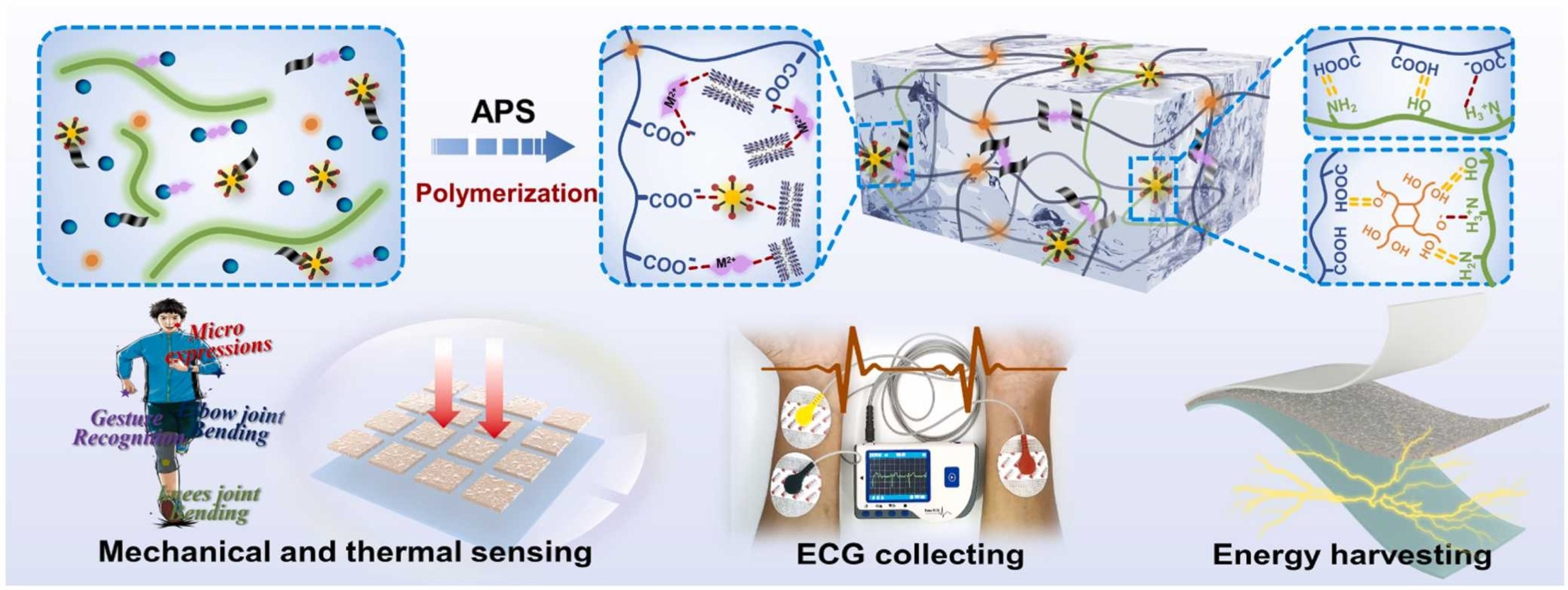文章专利

- 地址: 江苏省苏州市苏州工业园区若水路398号
- 邮箱: tzhang2009@sinano.ac.cn
- 电话: 86-512-62872706
- 传真: 0512-62603079
- 网址: http://nanosensor.sinano.ac.cn

Hysteresis-Free, Fatigue-Resistant and Self-Adhesive Conductive Hydrogel Electronics towards Multimodal Wearable Application, Nano Energy, 2024, 126, 109586.
Mingxu Wang; Lianhui Li; Ting Zhang*;
Abstract:
Conductive hydrogel-based electronic skins (e-skins) have attracted great attentions in health monitoring, human-machine interactions, and soft devices. Yet, broad challenges still remain in manufacturing of highperformance units, ingenious assembly of devices and developing of multimodal applications. Here, a typical strategy of combined covalent crosslinking and dynamic non-covalent interaction (multiple hydrogen bonds and electrostatic complexation) is used to prepare the ultra-durable polyacrylic acid (PAA)/ chitosan (CS)/ Ti3C2Tx (MXene) conductive hydrogel. It exhibits matched modulus for human skin, subtle mechanical hysteresis behavior (η=0.27% of 200% stretch, energy loss coefficient), great fatigue-resistant stability (>99%, 400% strain), robust interface adhesion (~30 kPa) and essential biocompatibility. Benefited of such high performance, a series of hydrogel-based devices are further assembled to demonstrate the multi-mode and multi-scenario applications, including the strain and temperature sensors, triboelectric nanogenerator. Clearly, thereby this work provides a new toolbox for the rational design of high-performance hybrid hydrogel, and points out a general route for further hydrogel-based device assembly and multimodal applications.

URL: https://www.sciencedirect.com/science/article/pii/S2211285524003343
